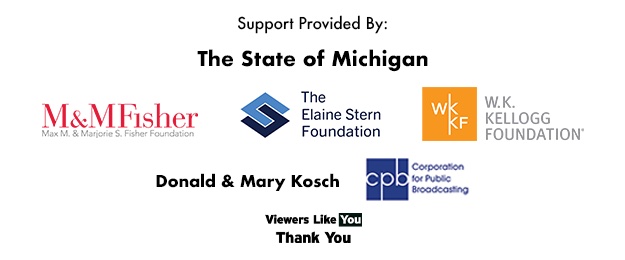Grades
Standard
Form and use frequently occurring irregular plural nouns (e.g., feet, children, teeth, mice, fish).
Form and use the past tense of frequently occurring irregular verbs (e.g., sat, hid, told).
I can recognize the main idea in a text with more than one paragraph. I can identify what each paragraph [...]
I can identify historical events. I can identify scientific ideas or concepts. I can identify the steps in a process. [...]
I can identify words and phrases that are specific to a the topic of a text. I can use information [...]
I can identify and give examples of text features. I can explain how text features help locate key facts or [...]
I can identify purposes for reading. I can read a text and identify the author's main purpose for writing it.
I can explain how the images add meaning to words. I can use images and words in a text to [...]
I can identify specific points the author makes in a text. I can describe the reasons the author uses to [...]
I can identify the most important points found in two texts on the same topic. I can compare the most [...]
I can decode words with short vowel sounds. I can recognize familiar short vowel spelling patterns. I can decode words [...]
Distinguish long and short vowels when reading regularly spelled one-syllable words.
Know spelling-sound correspondences for additional common vowel teams.
Identify words with inconsistent but common spelling-sound correspondences.
I can fluently read. I can self-correct if I make a mistake when I read. I can understand what I [...]
Read grade-level text orally with accuracy, appropriate rate, and expression.
Use context to confirm or self-correct word recognition and understanding, rereading as necessary.
I can state an opinion. I can give reasons to support my opinion using linking words. I can write a [...]
Use sentence-level context as a clue to the meaning of a word or phrase.
Identify frequently occurring root words (e.g., look) and their inflectional forms (e.g., looks, looked, looking).
I can sort words into categories. I can define words by categories using common traits. I can connect words I [...]
Sort words into categories (e.g., colors, clothing) to gain a sense of the concepts the categories represent.
Define words by category and by one or more key attributes (e.g., a duck is a bird that swims; a [...]
Identify real-life connections between words and their use (e.g., note places at home that are cozy).
Distinguish shades of meaning among verbs differing in manner (e.g., look, peek, glance, stare, glare, scowl) and adjectives differing in [...]
I can discover new words and phrases through reading, listening, and conversation. I can use my new words when speaking [...]
I can ask and answer questions before, during, and after reading a text. I can recall who, what, where, when, [...]
I can fluently read fictional grade level text. I can read at an appropriate rate, with expression, and pay attention [...]
I can identify characteristics and recall details of stories (including fables and folktales from diverse cultures). I can determine the [...]
I can identify characters in a story. I can describe how characters react to events and challenges in a story.
I can identify words and phrases that create a beat in a poem or song. I can identify words and [...]
Describe the overall structure of a story, including describing how the beginning introduces the story and the ending concludes the [...]
I can define point of view. I can identify a character's point of view in a story. I can show [...]
I can identify illustrations that support a story. I can explain how illustrations add meaning to the words in a [...]
I can retell two or more versions of the same story. I can compare and contrast two or more versions [...]
I can recall who, what, where, when, why, and how to show understanding of details in a informational text. I [...]
I can fluently read informational grade level texts. I can read at an appropriate rate, with expression, and pay attention [...]
I can add drawings or visual displays to clarify my ideas, thoughts, or feelings.
I can recognize a complete sentence. I can use complete sentences when needed.
Demonstrate command of the conventions of standard English grammar and usage when writing or speaking.
Use singular and plural nouns with matching verbs in basic sentences (e.g., He hops; We hop).
Use personal, possessive, and indefinite pronouns (e.g., I, me, my; they, them, their, anyone, everything).
Grades
Standard
Form and use frequently occurring irregular plural nouns (e.g., feet, children, teeth, mice, fish).
Form and use the past tense of frequently occurring irregular verbs (e.g., sat, hid, told).
I can recognize the main idea in a text with more than one paragraph. I can identify what each paragraph [...]
I can identify historical events. I can identify scientific ideas or concepts. I can identify the steps in a process. [...]
I can identify words and phrases that are specific to a the topic of a text. I can use information [...]
I can identify and give examples of text features. I can explain how text features help locate key facts or [...]
I can identify purposes for reading. I can read a text and identify the author's main purpose for writing it.
I can explain how the images add meaning to words. I can use images and words in a text to [...]
I can identify specific points the author makes in a text. I can describe the reasons the author uses to [...]
I can identify the most important points found in two texts on the same topic. I can compare the most [...]
I can decode words with short vowel sounds. I can recognize familiar short vowel spelling patterns. I can decode words [...]
Distinguish long and short vowels when reading regularly spelled one-syllable words.
Know spelling-sound correspondences for additional common vowel teams.
Identify words with inconsistent but common spelling-sound correspondences.
I can fluently read. I can self-correct if I make a mistake when I read. I can understand what I [...]
Read grade-level text orally with accuracy, appropriate rate, and expression.
Use context to confirm or self-correct word recognition and understanding, rereading as necessary.
I can state an opinion. I can give reasons to support my opinion using linking words. I can write a [...]
Use sentence-level context as a clue to the meaning of a word or phrase.
Identify frequently occurring root words (e.g., look) and their inflectional forms (e.g., looks, looked, looking).
I can sort words into categories. I can define words by categories using common traits. I can connect words I [...]
Sort words into categories (e.g., colors, clothing) to gain a sense of the concepts the categories represent.
Define words by category and by one or more key attributes (e.g., a duck is a bird that swims; a [...]
Identify real-life connections between words and their use (e.g., note places at home that are cozy).
Distinguish shades of meaning among verbs differing in manner (e.g., look, peek, glance, stare, glare, scowl) and adjectives differing in [...]
I can discover new words and phrases through reading, listening, and conversation. I can use my new words when speaking [...]
I can ask and answer questions before, during, and after reading a text. I can recall who, what, where, when, [...]
I can fluently read fictional grade level text. I can read at an appropriate rate, with expression, and pay attention [...]
I can identify characteristics and recall details of stories (including fables and folktales from diverse cultures). I can determine the [...]
I can identify characters in a story. I can describe how characters react to events and challenges in a story.
I can identify words and phrases that create a beat in a poem or song. I can identify words and [...]
Describe the overall structure of a story, including describing how the beginning introduces the story and the ending concludes the [...]
I can define point of view. I can identify a character's point of view in a story. I can show [...]
I can identify illustrations that support a story. I can explain how illustrations add meaning to the words in a [...]
I can retell two or more versions of the same story. I can compare and contrast two or more versions [...]
I can recall who, what, where, when, why, and how to show understanding of details in a informational text. I [...]
I can fluently read informational grade level texts. I can read at an appropriate rate, with expression, and pay attention [...]
I can add drawings or visual displays to clarify my ideas, thoughts, or feelings.
I can recognize a complete sentence. I can use complete sentences when needed.
Demonstrate command of the conventions of standard English grammar and usage when writing or speaking.
Use singular and plural nouns with matching verbs in basic sentences (e.g., He hops; We hop).
Use personal, possessive, and indefinite pronouns (e.g., I, me, my; they, them, their, anyone, everything).


